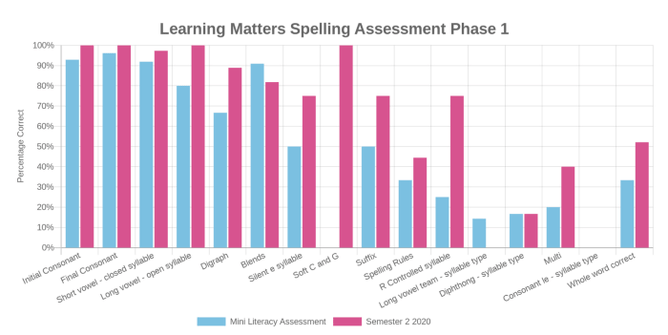It’s systematic but it’s not simple. When it comes to intervening and supporting the root cause of dyslexia, the success of every dyslexic child rests with the teacher, educator, and or parent supporting him or her. No pressure right?
So what is Dyslexia?
The International Dyslexia Association defines dyslexia as….
“a specific learning disability that is neurobiological in origin. It is characterized by difficulties with accurate and/or fluent word recognition and by poor spelling and decoding abilities. These difficulties typically result from a deficit in the phonological component of language that is often unexpected in relation to other cognitive abilities and the provision of effective classroom instruction. Secondary consequences may include problems in reading comprehension and reduced reading experience that can impede the growth of vocabulary and background knowledge.”
Let’s simplify that…
- Dyslexia runs in families
- It presents as people having trouble reading words and spelling
- Most of the time it is unexpected; meaning people do well in other areas of learning and life but may have difficulty with reading and spelling. This does vary.
- Due to the fact that reading is challenging (as in getting the words off the page), it is likely that comprehension strategies may not be so well developed and vocabulary will be limited due to a lack of exposure to written text.
Many years ago I asked myself questions such as “can dyslexia be treated, and if so how?” So often I look back on my personal experience and wish I knew then what I know now. I fell prey to so many shiny programs and products with no idea whether or not they were evidence-based and or if they were what I should have been using to teach my son. Hindsight is a wonderful thing.
The title of this blog is purposeful when we refer to the term ‘teaching approach.’ There is NO one programme on the market (and boy there are a few I know) that will remediate the dyslexic brain and help learners to become fluent, confident, successful readers and writers. It is also important for me to point out that any intervention is not better than NO intervention. In fact, I would absolutely argue the opposite. Evidence-based intervention and providing or partnering with an organisation that offers a teaching approach that reflects the evidence as outlined below is a MUST.
Neuroscience has taught us so much about how the reading brain develops. We now know that the brain was born to speak but not to read. Reading is a recent invention. We also know through FMRI scans which areas of the brain capable readers access, and which are underdeveloped and not being accessed by our dyslexic children. Many research studies have shown that when we intervene with the dyslexic brain with a multisensory structured literacy intervention we build the necessary neural pathways to strengthen and develop the reading brain. Dr. Guinevere Eden explains this in the following clip.
So what does all of this mean in regards to how we should be teaching our dyslexic children? What does an evidence-based literacy teaching approach look like for our dyslexic children?
The Teaching Approach that is helping dyslexic children to become more capable readers, spellers, and writers all over New Zealand contains the following elements:
- It is diagnostic — that means that an assessment is carried out to identify exactly what the child or student does or doesn’t know in relation to the building blocks of reading and or writing success. This should not be confused with a cognitive assessment that is used for the purpose of diagnosis. That assessment is necessary to build further understanding of WHY a child or student is struggling BUT… more often than not it lacks the key detail educators, teachers and parents need in order to know exactly where to start.
Options for diagnostic assessments that Learning Matters offer include our Mini Literacy Assessment and Home Learning Plans. You can learn more about these here.
- It is systematic and cumulative and follows a comprehensive scope and sequence (teaching order). The team at Learning Matters has trained extensively in multisensory language instruction and has crafted a scope and sequence (in a NZ context) that is thorough, increases in complexity and teaches syllable types and syllable division strategies as well as spelling rules.
- It is multisensory — two or more senses are engaged simultaneously during explicit teaching sessions.
- Evidence-based resources and repetition are included. Students and educators WILL be using decodable texts and supporting material that supports students to transfer skills, sounds, and letters that have been taught in isolation at a word and sentence level then taken to texts. Students will practice reading aloud. They will read aloud passages and or texts that specifically practice fluency in the skills they have been taught to this point.
- This teaching approach is carefully and closely monitored. Every session should be planned and based on success and challenges from the previous session . Further to this, progress must be measured and reported in a formal capacity at least twice a year. For our dyslexic children, we do not focus on where our children are in relation to others. We focus on what progress has been made. We focus on the rate of that progress and whether or not students are progressing through the scope and sequence, developing reading fluency, have an increased reading rate and are becoming more confident to approach literacy tasks in everyday life.
- It is explicit and direct and modified as necessary. The lessons are somewhat repetitive. Students know what to expect and they understand that each part of the lesson is part of a sequence to develop their reading brain. Review is a core component of these lessons. The biggest asset for these students is the knowledge and practice of the educator who sits opposite them. The educator needs to know and understand how the brain of this student is developing. They need to know and understand the complexities and challenges that come with dyslexia such as executive function deficits, processing speed, and coexisting learning differences such as dysgraphia, speech impediments, dyspraxia, autism, etc.
With this in mind, if you are a parent of a dyslexic child and are wondering whether the support your child is receiving aligns with the above, I encourage you to ask questions in order to ensure they are.
If you wish to chat further about the teaching approach Learning Matters implements with great success (in both our private support setting and many schools) for so many dyslexic children in New Zealand, we encourage you to visit our website or make contact. You are not alone. We are here to help you. We know better, so we are doing better.
Reach out to us admin@learningmatters.co.nz









